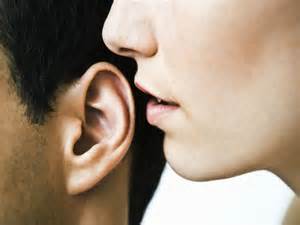
Have you tried talking dirty to a partner? Think of your imagination and your voice as fun sex toys that you always have with you, cost nothing, and don’t require a trip, virtual or otherwise, to the sex store. You just need to be brave enough to bring it out. If you are a little nervous to try, here are some tips:
Take a breath – You know that squeaky, croaky voice thing that happens when you seem to run out of air while talking – not sexy. Start by taking a slow breath, there is no rush. You will feel calmer and, as a bonus, no pubescent voice cracking. Oh, and laughter is a great way to get yourself breathing.
Picture it in your mind – Your words will come more easily and be more juicy if you let yourself form images in your mind. As they used to say in writing class, “no turn on for the writer, no turn on for the reader”, Wait, that wasn’t quite what they said…Well, anyway, use your imagination to turn yourself on and it will be more fun all around.
Try different perspectives – Some of you will love telling a sexy tale from a first person perspective, what you want to do to a partner, what you imagine being done to you. But some of you will have more fun talking about imaginary other people, which can go anywhere from what the naughty neighbors are doing next door to what Marie Antoinette got up to. I suggest you try shifting it up and see what stokes your fantasy creation best.
Do it in the dark – Phone sex works for people for a lot of reasons, but a major one is removing the pressure of being seen. Just letting yourself be a voice in the dark, lets you both close your eyes and indulge in imagining. No one can see you blush and you can still touch, get in close and whisper so your breath brushes your partner’s ears or neck.
Have a safe word – Yes, even for talking sexy it is good to have safe boundaries. Each of our fantasy realms are different with borders that are in scary territory for some people. If you really want to get into talk as turn-on, it can help to establish some turn-offs first. Get a sense of what is off limits (possibilities might be talking about people you actually know, adult/child scenes, violence or humiliation, describing your partner’s body as different than it actually is or…). People’s limits are different when it comes to fantasy, but we still have our limits.
No pressure to do – Remember that just because you get hot thinking about it, that doesn’t mean you want to do it. Talk about this with your partner ahead of time so there is no misunderstanding. Fantasy is fantasy; part of the fun is to go out to the edges. Just promise to let them know what you DO want to actually do when that time comes. Maybe promise to tell them in exquisite detail…